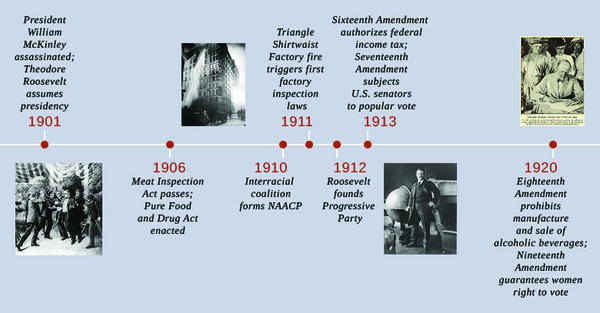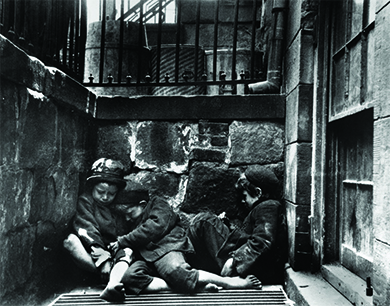| << Chapter < Page | Chapter >> Page > |

The Progressive Era was a time of wide-ranging causes and varied movements, where activists and reformers from diverse backgrounds and with very different agendas pursued their goals of a better America. These reformers were reacting to the challenges that faced the country at the end of the nineteenth century: rapid urban sprawl, immigration, corruption, industrial working conditions, the growth of large corporations, women’s rights, and surging anti-black violence and white supremacy in the South. Investigative journalists of the day uncovered social inequality and encouraged Americans to take action. The campaigns of the Progressives were often grassroots in their origin. While different causes shared some underlying elements, each movement largely focused on its own goals, be it the right of women to vote, the removal of alcohol from communities, or the desire for a more democratic voting process.
A group of journalists and writers collectively known as muckrakers provided an important spark that ignited the Progressive movement. Unlike the “yellow journalists” who were interested only in sensationalized articles designed to sell newspapers, muckrakers exposed problems in American society and urged the public to identify solutions. Whether those problems were associated with corrupt machine politics, poor working conditions in factories, or the questionable living conditions of the working class (among others), muckrakers shined a light on the problem and provoked outraged responses from Americans. President Theodore Roosevelt knew many of these investigative journalists well and considered himself a Progressive. Yet, unhappy with the way they forced agendas into national politics, he was the one who first gave them the disparaging nickname “muckrakers,” invoking an ill-spirited character obsessed with filth from The Pilgrim’s Progress , a 1678 Christian allegory written by John Bunyan.
Beginning in the second half of the nineteenth century, these Progressive journalists sought to expose critical social problems and exhort the public to take action. In his book, How the Other Half Lives (1890), journalist and photographer Jacob Riis used photojournalism to capture the dismal and dangerous living conditions in working-class tenements in New York City ( [link] ). Ida Tarbell, perhaps the most well-known female muckraker, wrote a series of articles on the dangers of John D. Rockefeller’s powerful monopoly, Standard Oil. Her articles followed Henry Demarest Lloyd’s book, Wealth Against Commonwealth , published in 1894, which examined the excesses of Standard Oil. Other writers, like Lincoln Steffens, explored corruption in city politics, or, like Ray Standard Baker, researched unsafe working conditions and low pay in the coal mines.


Notification Switch
Would you like to follow the 'U.s. history' conversation and receive update notifications?